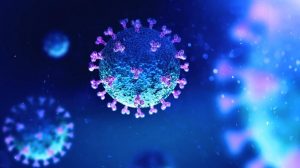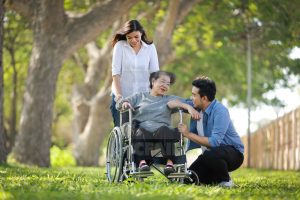Stroke is one of the leading causes of death and disability that affects the patient’s quality of life. About 15 million people suffer a stroke annually. Many of these are fatal and a third of patients develop serious permanent disability. A planned and effective stroke recovery program is the key to overcome the impact of stroke on the patient’s life.
Quality of Life Before and After a Stroke
Stroke is a serious disease that attacks the brain, the control center of the human body. When someone has a stroke, there is a disruption in the control system. Permanent disability becomes a threatening risk other than death.
As a result, there will be a change in the patients’ quality of life before and after a stroke. While before a stroke the patients could easily move with their hands and feet, they might need a lot of help even just to walk after the attack.
To improve the quality of life and to practice independence, post-stroke rehabilitation exercise is needed as part of a stroke recovery program. This program can be done in the form of physiotherapy, occupational therapy, and speech therapy. Through this program, the patients are expected to be able to relearn skills that were lost when a stroke affects part of the brain.
Post-Stroke Multidisciplinary Care
The severity of a stroke and each person’s ability to recover varies. According to research, individuals who participate in a post-stroke recovery rehabilitation program could have a better recovery.
There are many approaches in the management of post-stroke patients. The type of approach depends on the body part or ability affected by the stroke. Intensive post-stroke rehabilitation program involves a variety of multidisciplinary specialists, including:
- Primary care physicians, neurologists, and rehabilitation specialists
- Rehabilitation nurse who specializes in caring for patients with activity limitations
- Physiotherapists to help patients relearn physical movements such as walking and maintaining balance
- Occupational therapist who can guide patients to relearn how to use their hands for daily activities, such as bathing and dressing
- Speech therapist who can help with cognitive and language problems and swallowing difficulty
What Can Be Done and Expected During Post-Stroke Recovery
Stroke recovery with a rehabilitation program takes time. There is no exact formula for when the rehabilitation will take place. It is natural that the patients feel frustrated and find difficulties during the program that could hinder the recovery. Dedication and willingness to continue the intensive post-stroke rehabilitation program will greatly determine the success of the recovery.
The result of a stroke recovery program could be influenced by several factors, such as:
- Physical, including stroke severity in terms of cognitive and physical effects
- Emotional, such as motivation, mood, and ability to participate in rehabilitation activities outside of therapy sessions
- Social, such as support from family and friends
- Therapeutic, including the timing of rehabilitation commencement and skills of the rehabilitation team
Therapy Performed After the Patient’s Condition Stable in Hospital
Because every stroke is different, there is no same recovery pattern for each patient. Treatment is generally first performed in the hospital after the patient’s condition stable within a few days or weeks after the attack occurred.
This early-stage therapy will help shift the patient’s rehabilitation program from hospital to home and to prevent another stroke. These types of therapy include:
- Speech therapy
- Swallowing therapy
- Understanding the speech of others
- Moving body parts such as hands and feet affected by stroke
At Home Therapy
When the patients are allowed to leave a hospital after treatment, the doctor will provide a guidance to conduct self-therapy at home. Some types of therapy require help and assistance from an expert, some others can be done independently. For example:
- Walking, including with assistive devices if necessary
- Moving in bed, such as rolling over and sitting in bed
- Switching positions, for example from sitting to standing and vice versa
- Strength, coordination, balance, and movement exercise
- Use of orthotic devices to help the body move more efficiently and comfortably in daily activities
Physiotherapy, Occupational Therapy, Speech and Swallowing Therapy Assisted Exercises
In order to maximize the recovery process, stroke patients should perform exercises assisted by physiotherapy, occupational therapy, and speech and swallowing therapy. Each type of exercise will help patients regain skills so they can be more independent and improve their quality of life.
- Physiotherapy: restoring function of body parts affected by a stroke, such as hands and feet
- Occupational therapy: improving ability to perform daily activities, including bathing, going to the toilet, dressing
- Speech and swallowing therapy: helping patients to regain speech and language skills and treat swallowing disorders that can cause other health problems
Exercise Independently
There are several types of post-stroke intensive exercises that can be performed without specialist assistance, for example:
- Grip exercise: sit in a chair with armrests. Grip a light object, then bend your wrist up and down. Do it repeatedly to improve hand strength and gripping ability.
- Wrist stretch: using the same chair, sit with your wrists dangling at the ends of the armrests. Lower one wrist, then use the other hand to raise it and move it slowly left and right to stretch the ligament.
- Shoulders exercise: by sitting or standing, clench your fists and position your elbows at a 90-degree angle. Move your fists outward as if to open a door, then return to the initial position. The goal is to strengthen the shoulder and increase range of motion.
- Knee exercise: in a lying position with both hands down straight on the left and right side of your body, bend both knees. Slowly lower your knees, then move them to the left and back to the center. Then move it to the right and to the center again. This exercise will improve strength, coordination, and balance.
- Sitting-standing: sit with legs bent 90 degrees. Slowly stand up and make sure your knees don’t go past your toes. Then slowly sit back down. The purpose is to strengthen the thigh muscles and improve balance and transfer of body weight.
Stroke recovery exercise programs for each patient can be different. The doctor who treats the patient at the hospital will provide training guidelines according to the patient’s condition.



